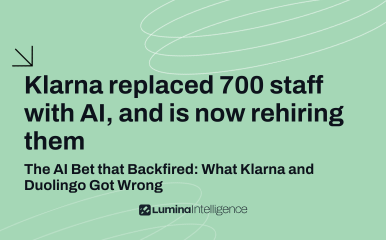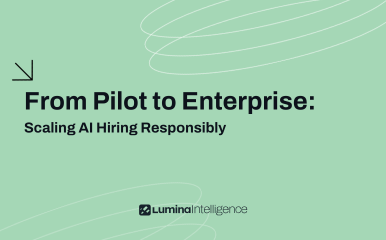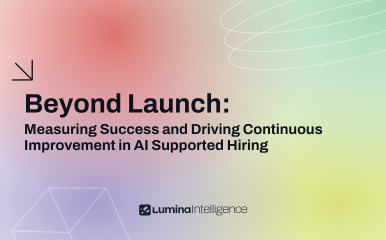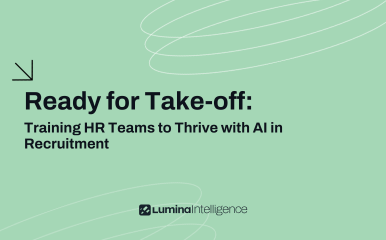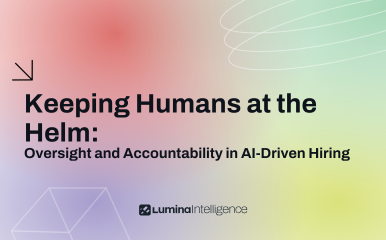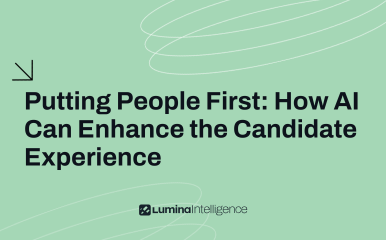Over the past nine weeks, we have explored how to build, govern and scale an ethical AI hiring programme. To conclude the series, Week 10 looks forward. What new technologies are on the horizon, how might regulation evolve, and what should talent leaders do now to stay ahead? This final article offers a practical preview of AI-driven recruitment in the years to come.
Emerging Technologies to Watch
- Generative language models
Tools that draft job adverts, interview questions and personalised feedback at the click of a button, freeing recruiters for strategic work. - Multimodal assessment
AI systems combine text, voice and video signals to gain a richer view of candidate skills and communication style. - Skills inference from portfolios
Algorithms that analyse code repositories, design files or project histories to identify capabilities beyond a traditional CV. - Labour-market mapping
Real-time engines that scan vacancies, wages and mobility trends to recommend the best sourcing channels for each role. - Adaptive career agents
Personalised chat assistants that guide applicants through applications, training and internal moves, improving retention as well as attraction.
The Regulatory Horizon
- EU AI Act
Final text likely to label recruitment AI as high risk, requiring detailed risk assessments, human oversight and public disclosures. - Algorithmic accountability bills
Draft laws in the United States and other regions may demand impact audits and candidate notification for automated decisions. - Cross-border data rules
Tighter controls on international data transfers mean vendor contracts and storage locations will face closer scrutiny. - ISO 42001
A new management standard for AI governance that organisations can adopt voluntarily to demonstrate best practice.
Action point: Track draft legislation six to twelve months before enforcement and test your systems against the strictest expected standard.
New Ethical Questions
- Deepfake and identity fraud
Video interviews may need authentication steps, such as secure sign-on or liveness checks. - Consent for synthetic data
If vendors train models on public social profiles, ensure this does not breach candidate expectations or privacy law. - Environmental footprint
Large models consume significant energy. Ask providers for data-centre efficiency figures and consider carbon-offset policies. - Equity in generative content
Auto-written feedback must avoid “one size fits all” phrasing that feels impersonal or culturally biased.
Preparing Your Organisation Today
- Build flexible governance
Use modular policies that can be updated quickly as laws change. - Create a future-skills roadmap
Identify upcoming AI skills, such as prompt engineering or synthetic data testing, and schedule training budgets early. - Vet vendors rigorously
Request transparency reports, model cards and proof of bias testing for any new AI feature. - Invest in clean, portable data
High-quality, well-tagged data lets you pivot to new tools without costly migrations. - Engage with external forums
Join industry consortia or standards bodies to influence guidelines and share best practices.
A Vision of Recruitment in 2030
Imagine a candidate visits your career site. An AI agent analyses their goals and instantly suggests open roles, necessary upskilling courses and likely career paths. The application populates itself from verified digital credentials. Assessments adapt in real time, focusing on knowledge gaps rather than repeating known strengths. A recruiter reviews a concise dashboard that explains each recommendation and flags any ethical risks. The result is a hiring process that is faster, fairer and genuinely personalised.
Future-Ready Checklist
- The policy framework allows rapid updates.
- Vendor contracts include audit and disclosure clauses.
- Data clean-up project scheduled and funded.
- The training plan covers next-generation AI skills.
- Sustainability metrics are considered in model selection.
Tick these boxes and your team will be ready for what comes next.
Conclusion
Ethical AI in recruitment is not a destination; it is an evolving practice that blends technology, law and human judgment. By watching emerging tools, anticipating regulation and nurturing a culture of continuous learning, you can ensure your hiring strategy remains fair, transparent and competitive in the decade ahead.
Thank you for following the Lumina Intelligence series on ethical AI hiring. We hope the insights have equipped you to innovate with confidence.
